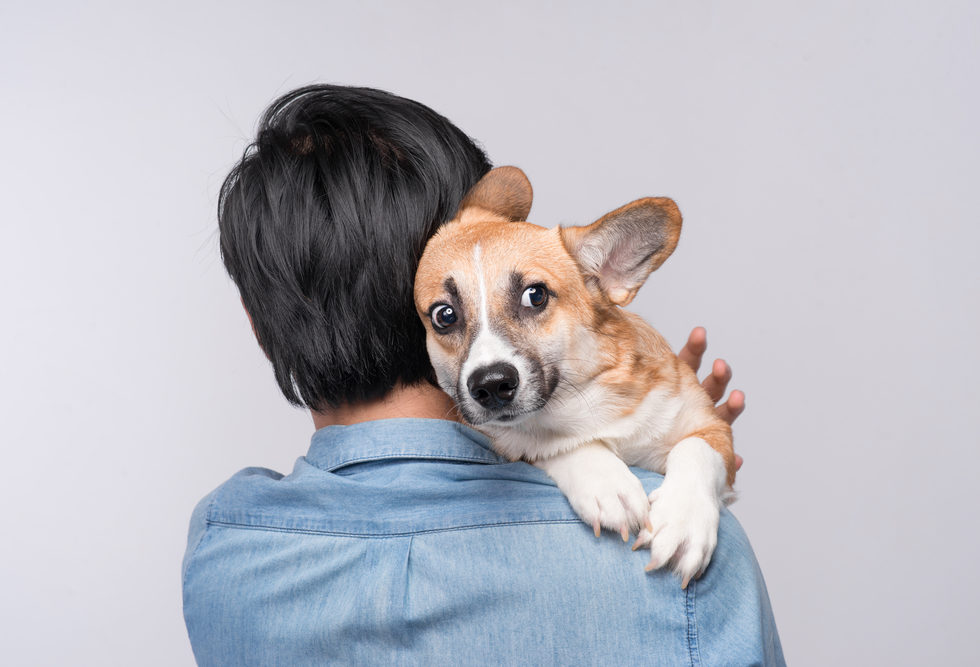Alleviate your dog’s fear with these five simple steps.
Is your dog anxious and skittish? Does she react with fear to many harmless events? Here are five steps to ease her fear and help her recover from any traumatic events she experienced in the past.
 1. Have realistic expectations
1. Have realistic expectations
Very fearful dogs may never be “normal”. while many fearful or abused dogs recover or improve with time and/or specific treatments, don’t expect them to turn into “social butterflies” or become confident and outgoing in all situations. If you have a fearful dog, accept the fact that even your best efforts may not make him “normal”.
2. Keep him comfortable
Continually forcing a dog to be around people, sounds or events that bring out a full intensity fear response will not help him “get over” it. In fact, if a fearful animal can’t avoid or escape frightening situations, aggression can result. Do your best to manage his environment to minimize exposure to frightening situations.
3. Provide a healthy lifestyle
A good diet, proper veterinary care, exercise and mental stimulation can help any dog deal with the challenges of life. Good health will help a fearful or traumatized dog cope with stress. Play and exercise release tension, help the dog relax, provide a sense of control, and improve quality of life.
4. Use behavior modification techniques
Behaviour modification techniques known as desensitization and counter conditioning can treat of all sorts of fears, phobias and anxiety disorders. These procedures involve gradual, controlled exposures to fear-eliciting stimuli, in order to change the emotional state. This approach, when done correctly, can be very successful in reducing both fearful emotions and behaviors. Seek the help of an experienced and certified behaviorist to implement this kind of plan, if necessary.
5. Talk to your veterinarian about natural remedies
If your dog is fearful most of the time, or if environmental management and behavior modification techniques don’t seem to be helping, talk to your veterinarian about additional options. Holistic veterinarians can prescribe specific remedies or dietary supplements, often combined with acupuncture and massage. Pheromones may help dogs feel more relaxed, and products such as thunderstorm wraps can help keep them calmer in the face of anxiety-producing situations.
Regardless of what has caused your dog to become fearful, these treatments will help. The sooner you recognize fearful and anxious states in your dog, and identify the situations that trigger them, the more effective treatment will be.
This blog was adapted from the article “5 Ways To Soothe Fear In Dogs” by Suzanne Hetts, PhD, CAAB, CVJ and Daniel Estep, PhD, CAAB.







